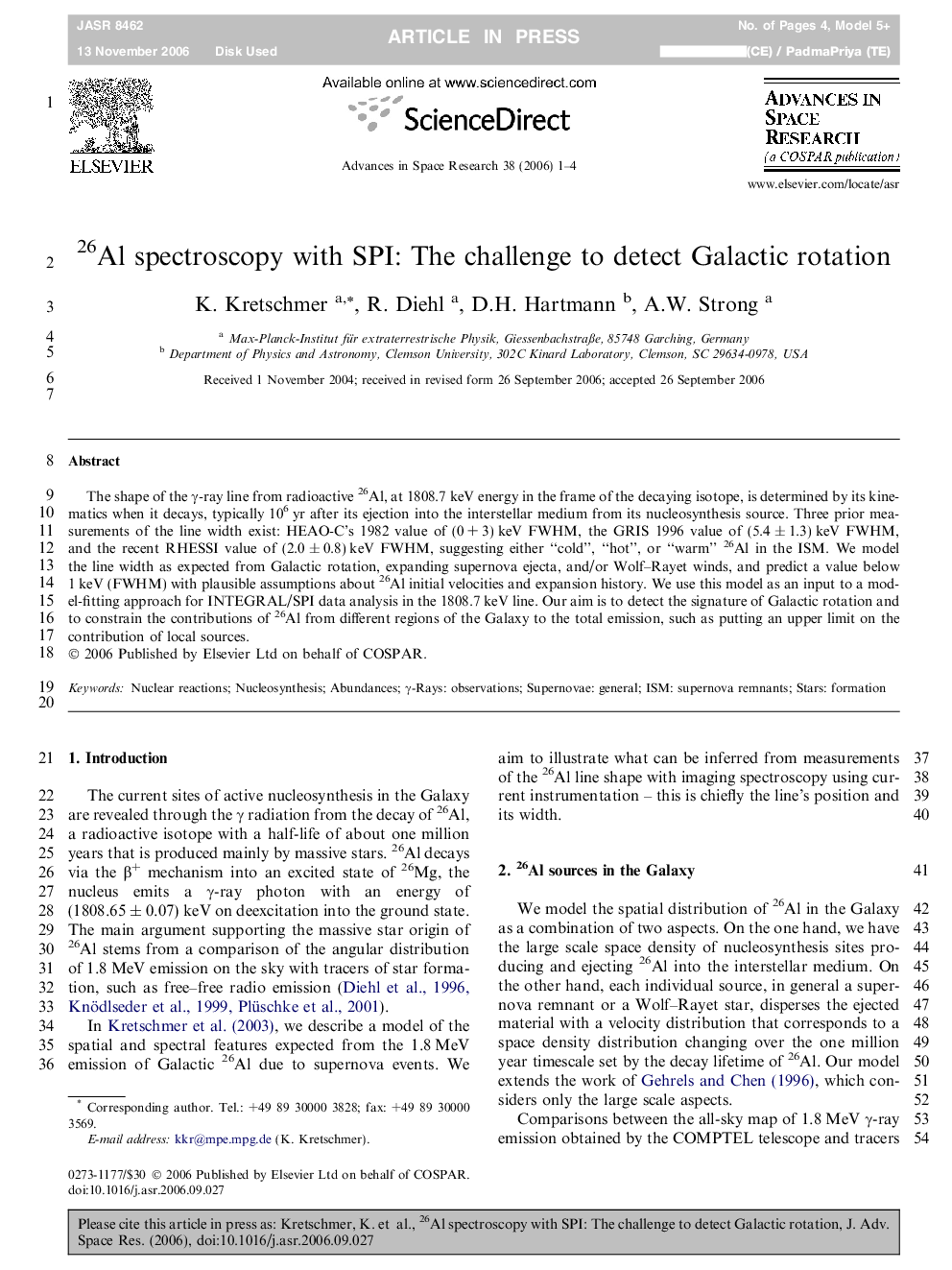| Article ID | Journal | Published Year | Pages | File Type |
|---|---|---|---|---|
| 1768304 | Advances in Space Research | 2006 | 4 Pages |
Abstract
The shape of the γ-ray line from radioactive 26Al, at 1808.7 keV energy in the frame of the decaying isotope, is determined by its kinematics when it decays, typically 106 yr after its ejection into the interstellar medium from its nucleosynthesis source. Three prior measurements of the line width exist: HEAO-C's 1982 value of (0 + 3) keV FWHM, the GRIS 1996 value of (5.4 ± 1.3) keV FWHM, and the recent RHESSI value of (2.0 ± 0.8) keV FWHM, suggesting either “cold”, “hot”, or “warm” 26Al in the ISM. We model the line width as expected from Galactic rotation, expanding supernova ejecta, and/or Wolf-Rayet winds, and predict a value below 1 keV (FWHM) with plausible assumptions about 26Al initial velocities and expansion history. We use this model as an input to a model-fitting approach for INTEGRAL/SPI data analysis in the 1808.7 keV line. Our aim is to detect the signature of Galactic rotation and to constrain the contributions of 26Al from different regions of the Galaxy to the total emission, such as putting an upper limit on the contribution of local sources.
Keywords
Related Topics
Physical Sciences and Engineering
Earth and Planetary Sciences
Space and Planetary Science
Authors
K. Kretschmer, R. Diehl, D.H. Hartmann, A.W. Strong,
